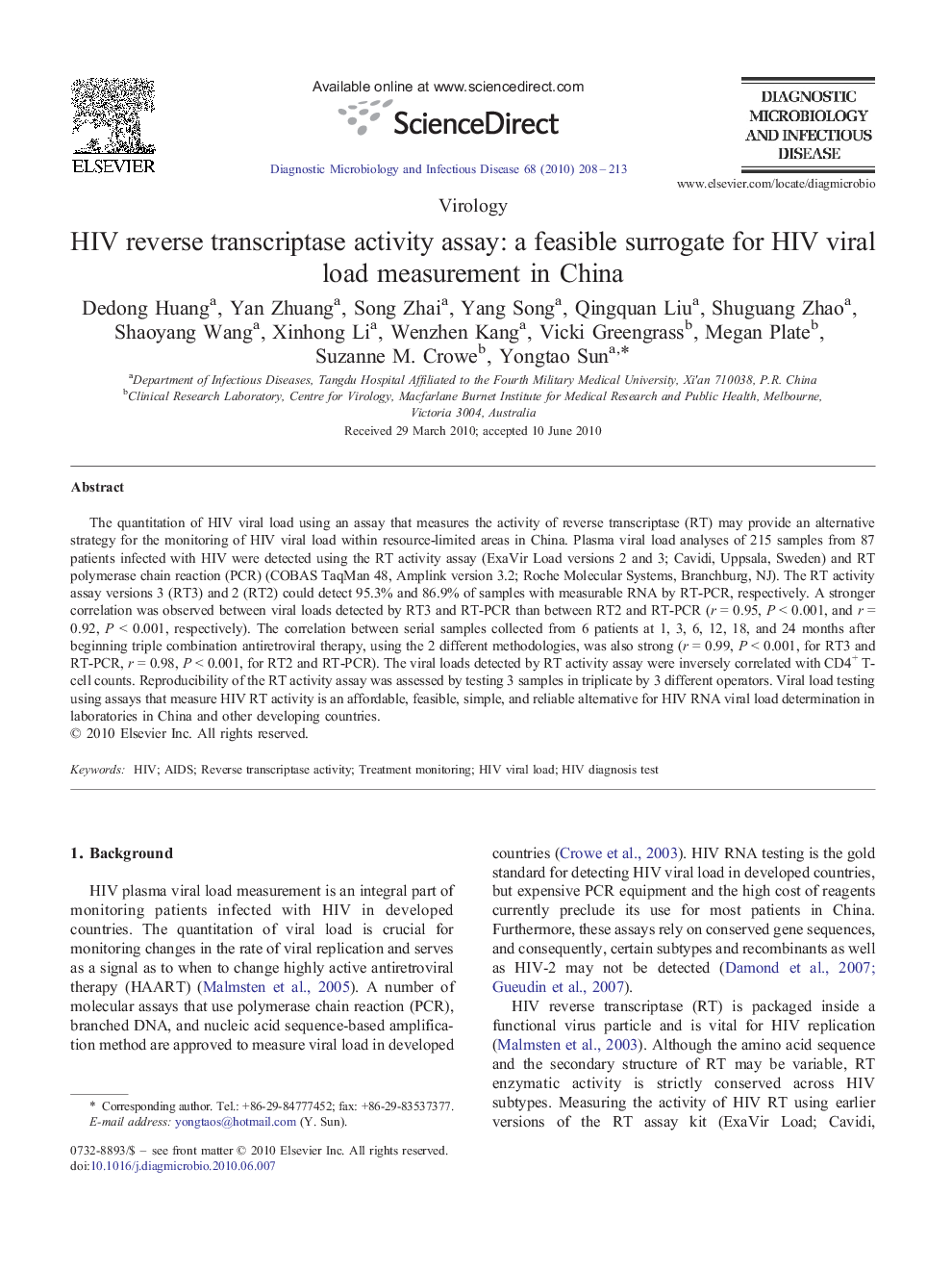| Article ID | Journal | Published Year | Pages | File Type |
|---|---|---|---|---|
| 3347639 | Diagnostic Microbiology and Infectious Disease | 2010 | 6 Pages |
The quantitation of HIV viral load using an assay that measures the activity of reverse transcriptase (RT) may provide an alternative strategy for the monitoring of HIV viral load within resource-limited areas in China. Plasma viral load analyses of 215 samples from 87 patients infected with HIV were detected using the RT activity assay (ExaVir Load versions 2 and 3; Cavidi, Uppsala, Sweden) and RT polymerase chain reaction (PCR) (COBAS TaqMan 48, Amplink version 3.2; Roche Molecular Systems, Branchburg, NJ). The RT activity assay versions 3 (RT3) and 2 (RT2) could detect 95.3% and 86.9% of samples with measurable RNA by RT-PCR, respectively. A stronger correlation was observed between viral loads detected by RT3 and RT-PCR than between RT2 and RT-PCR (r = 0.95, P < 0.001, and r = 0.92, P < 0.001, respectively). The correlation between serial samples collected from 6 patients at 1, 3, 6, 12, 18, and 24 months after beginning triple combination antiretroviral therapy, using the 2 different methodologies, was also strong (r = 0.99, P < 0.001, for RT3 and RT-PCR, r = 0.98, P < 0.001, for RT2 and RT-PCR). The viral loads detected by RT activity assay were inversely correlated with CD4+ T-cell counts. Reproducibility of the RT activity assay was assessed by testing 3 samples in triplicate by 3 different operators. Viral load testing using assays that measure HIV RT activity is an affordable, feasible, simple, and reliable alternative for HIV RNA viral load determination in laboratories in China and other developing countries.
